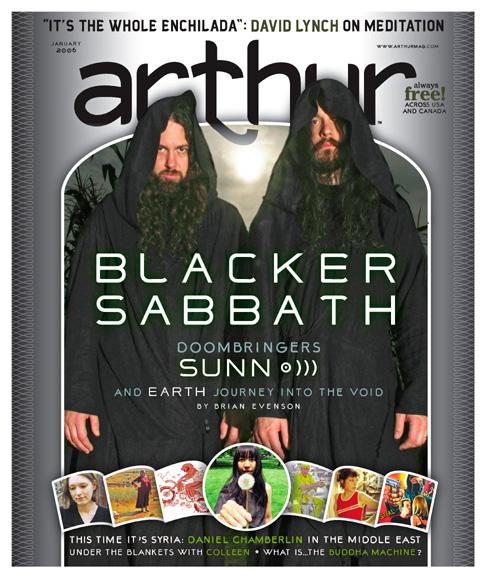Empire of Doom
Behind the scenes of Hollywood’s one-man doom record label Southern Lord
by Jay Babcock
Originally published in the August 08, 2002 LAWeekly
The Lair of Doom lies on a Hollywood boulevard, upstairs from a Thai restaurant. There, above the ambulance sirens and Metro bus brake squeals rising like so many noxious sonic fumes from the street below, a single industrious man labors intently. Listen close, at almost any hour of the day or night, and you‘ll hear his hearty cackle and—something else: a strange clatter, like the rattle of bones in a plastic tumbler.
Actually, that’s just the sound of Greg Anderson, 32-year-old founder of Southern Lord Records and currently its sole employee, working the phone and tapping out e-mail.
“I‘m here all the time,” says the longhaired, affable Anderson, gazing lovingly at one of the sources of his endurance, a 72-ounce pitcher-bucket of Coke he’s constantly refilling at the 7-Eleven across the street. “But I‘m not looking for sympathy! This is what I like to do.”
What Southern Lord has been doing since its inception in April 1998 is “doom metal,” a certain species of heavy music whose ultimate ancestor is Black Sabbath. Basically it sounds like the product of a bunch of guys smoking a lot of pot and trying to play music slower than the Melvins: bands have names like WarHorse and Place of Skulls, albums have titles like As Heaven Turns to Ash and Supercoven. It’s low-end music for black-clad midnight masses.
But Southern Lord does more than doom metal (strictly defined). Another look at the Lord‘s roster reveals: Mondo Generator, a churning, rumbling post-SST racket led by Queens of the Stone Age/ex-Kyuss bassist Nick Oliveri; SUNN 0))), which features dark, massive guitar sludgework by Anderson and Southern Lord graphic designer Stephen O’Malley; and Khanate, an O‘Malley-led band that Anderson characterizes as “black metal on ludes—it’s got that same grim evilness.”
With recent releases by the latter two ensembles, Southern Lord has begun to attract attention from new quarters. Acclaimed Japanese avant-garde noise warlock Merzbow mixed two tracks on SUNN 0)))‘s latest record, Flight of the Behemoth; Julian Cope has been an outspoken public champion (he’s called the just-released Rampton by Southern Lord supergroup Teeth of Lions Rule the Divine “an endless ambient Ragnarok”); and SUNN 0))), much to their surprise, found themselves being profiled this past spring by influential British artsy-music magazine The Wire. A recent East Coast tour by Khanate was attended as much by drone seekers and experimental music aficionados as the usual collection of stoners and adventurous metalheads.
Doom, it seems, is everywhere.
What follows are the Ten Commandments of Doom: both a how-to list for would-be micro-label operators and the slightly abridged tale, told in his own words, of how Greg Anderson found his grim calling…and followed it to the bitter end.
Continue reading